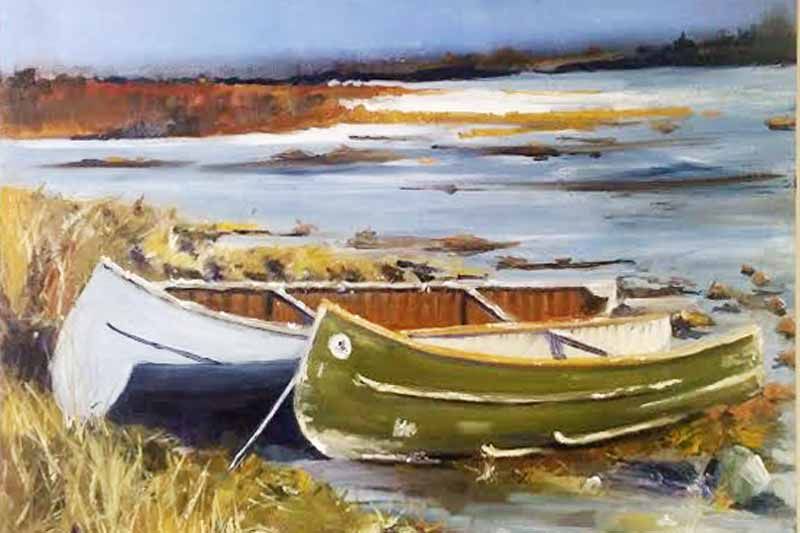Isidora Spielmann | Jun 22, 2016
“If the feeling in a work of art is strong enough, the work creates its own truth. This you have achieved Misha, in these paintings,” said Kim Ondaatje in her introduction to Misha Hunter’s exhibit. Ondaatje is hosting Hunter’s series of paintings about Attawapiskat at her gallery at Blue Roof Farm, just north of Bell Rock. The show will be open until Labour Day.
The “People of the parting of the rocks" are an isolated First Nation located in Kenora District in northern Ontario, the most remote northerly link on the 310 km long road to Moosonee.
When his mother taught art in the school there, Hunter visited twice to take part in art projects and work closely with the youth.
Sometimes one understands a situation better when one is a bit removed. On his return, in his own studio, Hunter translated the photographs he had taken on his trip into large oil paintings on boards. He also brought back with him the sense of place and the sense of people’s hearts and souls.
Misha Hunter’s paintings seek the connection of the land and its spirituality. They also speak of isolation and hopelessness.
Misha paints with sure strokes. He chose to limit his palette to convey not only the rather harsh and barren landscape (trees grow no taller than 5 feet and seem to huddle from the wind) but also the loss of identity that many people struggle with. The size of his paintings allow the viewer to enter and feel the bitter wind for a small moment, or bring one forward with the wish to walk over to that old canoe with its sawed-off tip, and run a finger over the chipped paint.
There is a wolf that greets us at the entrance to the town, “Rez Wolf”, a royal looking animal, at home in this winter. A tractor, a trailer, two canoes … items that must have been cherished some time ago but have since fallen from grace, forgotten in a field, left to crumble. A street light that seems to shine for nobody, a statue of Mary without face or hands, a church once proud, now seemingly ready to blow away into the cold skies.
Attawapiskat has been in crisis for many years. The cost of living is extraordinarily high because everything has to be brought in via aircraft. Their drinking water situation has been dire since the 1970s. The elementary school had to be closed because of a diesel spill. Housing lacks good heating and insulation and there is leakage from pipes and toxic mould.
Misha Hunter's paintings entice our inner dialogue about grace and human rights, about the standard of living and hope. He invites us to question the way things ought to be and our responsibilities towards each other.
While we sit in comfortable chairs chatting and drinking coffee at the gallery, Kim relates a few vignettes of her life that show her connection with Indigenous people. One of her earliest teachers was Jack Hawk, an Ojibway elder from whom she learned the “way of the wild”.
Blue Roof Farm is a little bit of heaven, created by this grand dame of Canadian art. The view from the window is spectacular – a great wild jumble of cultivated and wild flowers, grasses and trees. At the far end of the garden is a fountain that splashes off the side of a rock.
“Everything that you see growing here, except for that maple tree over there, I planted,” Kim states.
But speaking of the garden, it is time to get back to work! And off she goes, filling the bird feeders and trimming a bush. Kim’s parting words are, “Tell people to come and see this work; it is really important!”
Blue Roof Farm is located at 6313 First Lake Road, north of Bellrock. For information call 613-374-2147.
More Stories
- No Winner Yet in Catch The Ace But Fundraising Target Met
- South Frontenac Food Bank Opens Second Location in Battersea
- Sharbot Lake Pentecostal Church Anniversary - 1925-2025
- Frontenac Holistic Health Fair - September 20 At Storrington Centre
- Odd Year For Real Estate - But Sales Are Steady Year Over Year
- 193rd Kingston Fall Fair
- Kim Phuc - the Napalm Girl - To Visit Flinton In November
- South Frontenac Council - September 2
- Sticker Shock - EV Charging Station To Cost North Frontenac Township
- 30th Anniversary Verona Car Show

